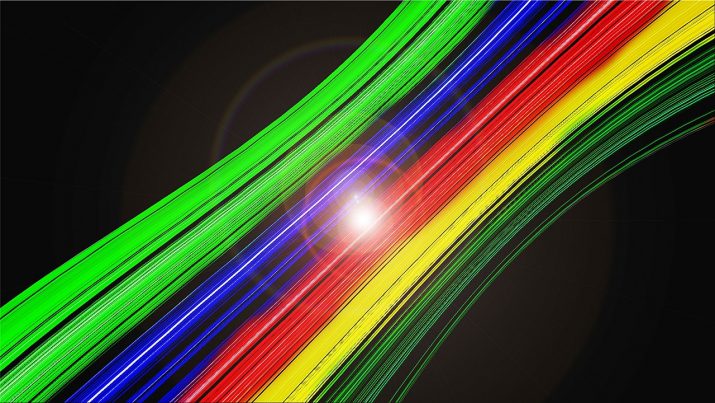
Researchers discover why there is a speed limit on the properties of light
Wednesday, September 05, 2018 by Edsel Cook
http://www.futuresciencenews.com/2018-09-05-researchers-discover-why-there-is-a-speed-limit-on-the-properties-of-light.html

Swedish researchers finally found the reason why we cannot alter the properties of light past a certain speed, even in artificial materials that are designed to do just that. In a recent article by Science Daily, they explained the discovery of the need to take a different approach to get past the speed limit.
Electromagnetic (EM) waves are an intrinsic part of practically all electronics. Light is perhaps the most important of those waves.
The greater the precision with which we can manipulate the properties of an EM wave, the more use we can get out of it. However, naturally available materials are no longer capable of meeting the increasing demands of faster, smarter technology.
This led researchers to develop optomechanical metamaterials, a class of artificial materials with very specialized roles. The new metamaterials can overcome the limitations of their natural counterparts.
One prevalent example that benefited from these materials is the optical switch. As its name implies, this device can alter the color or intensity of light. Its function is simple, but the optical switch fulfills irreplaceable roles in various technologies such as the Internet.
To enable heavy Internet traffic, optical switches turn themselves on and off up at high speeds. Some switches can hit 100 billion changes a second. But a switch cannot exceed that speed, even if it is made of optomechanical metamaterials. (Related: Innovative technology will allow dementia patients to live independently in their own homes.)
New metamaterials cannot outperform older equivalents due to speed limit
“Researchers had high hopes of achieving higher and higher speeds in optical switches by further developing optomechanical metamaterials,” recalled researcher Sophie Viaene of Chalmers University of Technology (Chalmers). She then shared the reason why the aforementioned metamaterials did not supersede older materials that handled internet traffic and mobile communication networks.
In her doctoral thesis, Viaene took a look at this speed limit through the lens of non-linear dynamics. She found out that changing the properties of light was much more efficient if the manipulation was performed on one particle at a time instead of immediately changing the entire surface of the material.
Current methods of altering the properties of light still targeted the whole surface of the material. Therefore, even if an optomechanical metamaterial was much more capable than its counterpart, the natural material would not be outperformed thanks to the arbitrary speed limit.
A different approach to this problem that doesn’t involve altering just one particle at a time is to let the specialty material constantly move at a constant speed. The variations of that movement can then be measured and analyzed.
Different uses for optomechanical metamaterials
Viaene and her supervisor, associate professor Philippie Tassin of Chalmers, added that optomechanical metamaterials are not a complete waste of effort and resources. They stressed that the speed limit on changing the properties of light does not encompass all applications that can use the specialty materials.
For example, displays and screens on various electronics do not need the ability to alter light many billions of times in a single second. Here, metamaterials have the advantage thanks to their thinner dimensions and greater flexibility, which are highly desired traits for displays and screens.
“The switching speed limit is not a problem in applications where we see the light, because our eyes do not react all that rapidly,” pointed out Tassin. He and Viaene could envision the possible roles of optomechanical metamaterials in creating thin, flexible gadgets that are used for interactive visualization.
Among these smarter devices are touch-responsive glasses, screens, and watches found on mobile devices and wearable technology.
Visit Computing.news to read about the latest efforts to speed up Internet traffic.
Sources include:
Tagged Under: Tags: breakthrough, computing, discoveries, electromagnetic, electromagnetic waves, electronics, future tech, gadgets, internet, inventions, light, metamaterials, mobile devices, optical switches, optomechanical metamaterials, particles, science and technology, specialty materials, speed of light





